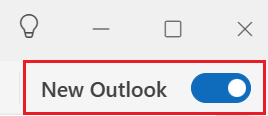Kontakte, Kalender, E-Mails und Aufgaben exportieren und sichern
Erstellen Sie eine Outlook-Sicherungsdatei, um Ihre E-Mails, Kontakte, Kalenderdaten und Aufgaben zu speichern und zu exportieren. Sie können Ihre Sicherung dann in ein neues E-Mail-Paket, einen neuen E-Mail-Dienst oder eine neue Version von Outlook importieren. Der Export enthält keine Metadaten wie Ordnereigenschaften (Ansichten, Berechtigungen und Einstellungen zur automatischen Archivierung), Nachrichtenregeln und Listen mit blockierten Absendern. Bitte beachten Sie, dass Microsoft Outlook-Versionen, die älter als 2016 sind, nicht mehr unterstützt.
Wählen Sie basierend auf der E-Mail-Plattform, die Sie verwenden, das entsprechende Register aus.
- Melden Sie sich bei Outlook online an. Verwenden Sie die E-Mail-Adresse und das Passwort für Microsoft 365. (Ihr GoDaddy-Benutzername und -Passwort funktionieren hier nicht.)
- Wählen Sie ganz links auf der Seite
 Kontakte.
Kontakte. - Wählen Sie Kontakte verwalten und anschließend Kontakte exportieren.
- Wählen Sie aus, ob Sie alle Kontakte oder aber nur Kontakte aus einem bestimmten Ordner exportieren möchten, und wählen Sie dann Exportieren aus.
Ihre Kontakte werden als CSV-Datei gespeichert und können nachfolgend in andere E-Mail-Apps (wie z. B. Gmail) oder andere Versionen von Outlook importiert werden.
- Öffnen Sie Outlook.
- Wenn Sie im neuen Outlook arbeiten, wechseln Sie zur klassischen Version. Deaktivieren Sie in der oberen rechten Ecke die Umschaltfunktion Neues Outlook. Möglicherweise müssen Sie bestätigen, dass Sie zur Vorgängerversion wechseln möchten.

- Wählen Sie oben links Datei aus.
- Wählen Sie Öffnen und Exportieren und dann Importieren/Exportieren aus.
- Wählen Sie In eine Datei exportieren und dann Weiter aus.
- Wählen Sie Outlook-Datendatei (.pst) und dann Weiter aus.
- Zum Exportieren des gesamten Postfachs wählen Sie den Namen des E-Mail-Kontos aus und fahren dann mit dem nächsten Schritt fort. Wenn Sie dagegen nur Ihren Kalender, Ihre Kontakte oder Aufgaben exportieren möchten, wählen Sie den jeweils gewünschten Ordner aus. Sie können jeweils nur einen Typ exportieren und müssen daher Kontakte, Kalender und Aufgaben gegebenenfalls einzeln exportieren.
- Achten Sie darauf, dass das Kontrollkästchen neben Unterordner einbeziehen aktiviert ist, und wählen Sie dann Weiter aus.
- Klicken Sie auf Durchsuchen, um den Speicherort für die Outlook-Datendatei (.pst) auszuwählen. Geben Sie einen Dateinamen ein und wählen Sie dann OK aus.
- Wenn Sie die Daten in eine bereits vorhandene Outlook-Datendatei (.pst) exportieren, geben Sie unter Optionen an, was beim Export von Elementen geschehen soll, die bereits in der Datei vorhanden sind.

- Wählen Sie Fertigstellen aus.
- Der Export startet sofort, es sei denn, eines der folgenden Szenarien trifft zu:
- Wenn das Dialogfeld Outlook-Datendatei erstellen angezeigt wird, geben Sie ein Passwort in die Felder Passwort und Passwort bestätigen ein und wählen Sie dann OK aus. Wenn Sie ohne Passwort fortfahren möchten, lassen Sie die Passwortfelder leer und wählen Sie dann OK aus.
- Wenn der Export in eine vorhandene Outlook-Datendatei (.pst) erfolgt, die passwortgeschützt ist, geben Sie im Dialogfeld Passwort für Outlook-Datendatei das Passwort ein und wählen Sie OK aus.
- Öffnen Sie Outlook.
- Wenn Sie mit der neuen Version von Outlook arbeiten, wechseln Sie zur Vorgängerversion von Outlook. Wählen Sie Outlook und dann Vorgängerversion von Outlook aus. Möglicherweise müssen Sie bestätigen, dass Sie zur Vorgängerversion wechseln möchten.

- Wählen Sie Datei und dann Exportieren aus. Das Fenster In Archivdatei exportieren (.olm) öffnet sich.
- Wenn Sie die Option Exportieren nicht sehen, wählen Sie stattdessen Tools und anschließend Exportieren aus.
- Wählen Sie aus, was Sie exportieren möchten. Standardmäßig sind alle Elemente ausgewählt.
- Um jeden dieser Typen einzeln zu exportieren, markieren Sie das Kontrollkästchen neben dem jeweiligen Element.

- Wählen Sie Weiter .
- Wählen Sie, wo auf Ihrem Computer Sie die Datei speichern möchten, geben Sie einen Dateinamen ein und wählen Sie anschließend Speichern aus. Ihre Elemente werden exportiert.
- Wählen Sie Fertigstellen aus.
Ähnlicher Schritt
- Nach dem Exportieren Ihrer Outlook-Daten in eine Sicherungsdatei können Sie sie in Outlook importieren.
Weitere Informationen
- Erfahren Sie, wie Sie einen Kalender in eine ICS-Datei von Microsoft exportieren können.
- Weitere Informationen zum Ex- und Importieren von Dateien in Outlook finden Sie bei Microsoft.
- In diesem Artikel von Apple erfahren Sie, wie Sie Postfächer in Apple Mail auf dem Mac importieren oder exportieren können.